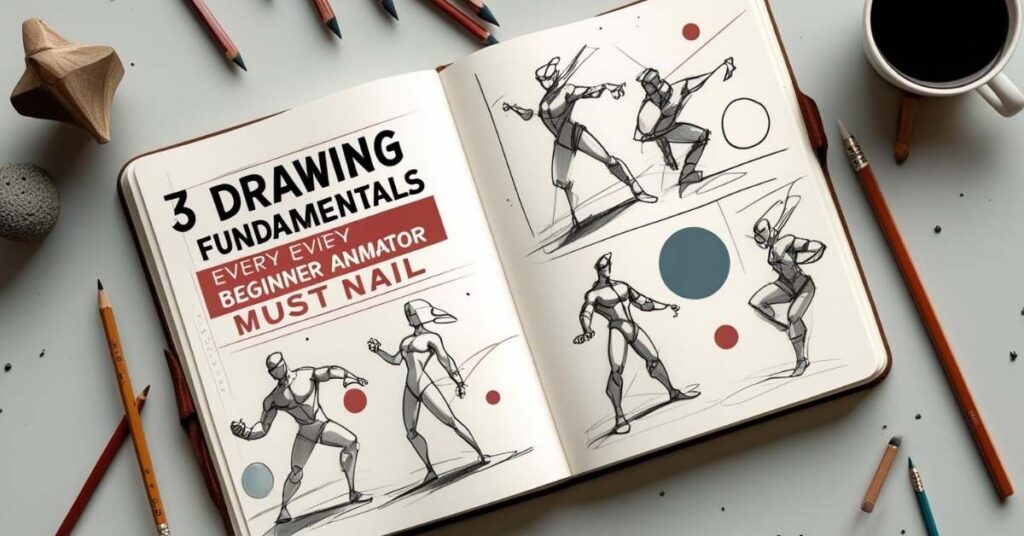Before I understood animation, I used to think it was all about movement. But then I tried animating a head turn… and it looked like a deflated balloon doing the worm. That’s when I realized: movement is nothing without solid drawing. Learning to animate without learning to draw is like trying to build a house with melting crayons.
1. Structure: The Skeleton Under the Skin
If your characters keep going wonky mid-motion, you might be missing this essential skill. Structure is the invisible framework that holds your drawing together. It’s what gives your characters form, proportion, and dimension—no matter what pose they’re in.
- Start with simple shapes (cubes, spheres, cylinders)
- Learn to rotate forms in space—it brings consistency to your characters
- Think of it like building with clay: rough it out, then refine
Even if you draw “cartoony,” this foundation is key. A circle with personality needs bones.

2. Gesture: The Energy Behind the Pose
Gesture is the heartbeat of your drawing. It’s what makes a character feel alive and mid-motion—even if they’re just standing still. A good gesture sketch can say more than a detailed rendering ever could.
- Draw quickly to capture flow, not details
- Use long lines of action to define the body’s energy
- Focus on weight, balance, and rhythm
I once spent two hours rendering a static pose… and scrapped it for a 30-second gesture that felt right. That’s when I understood: drawing is movement thinking.
3. Line Confidence: From Scratchy to Strong
Wobbly, uncertain lines often mean wobbly, uncertain thinking. Line confidence isn’t about perfection—it’s about intention. Your lines should reflect the energy and weight of what you’re animating.
- Use fewer lines and draw with your whole arm
- Practice drawing *through* forms, not just outlines
- Don’t overwork—commit and move on
A confident line is like a confident walk: it says, “I know where I’m going.”

The Course That Helped It All Click
I struggled with all three of these until I found the Fundamentals of Drawing – The Animation Course. It broke things down in a way that made drawing feel doable—not intimidating. I didn’t just learn to draw better. I started to see better.
- Step-by-step video lessons and warmups
- Focus on animation-specific drawing skills
- Projects that build from basic forms to full characters
There are many great options out there—including the Fundamentals of Animation Course by Aaron Blaise, a Disney veteran who teaches from experience. But if you’re struggling with the drawing part of animation? This one was my breakthrough.
Final Thoughts
Strong drawing is the secret sauce of great animation. Nail structure, gesture, and line confidence, and suddenly your animations won’t just move—they’ll speak. Like anything worth learning, it takes time. But once it clicks, there’s no going back.
Sources
- Fundamentals of Drawing – The Animation Course
Beginner-focused online course teaching structure, gesture, and line with animation in mind. - Fundamentals of Animation Course – Aaron Blaise
A Disney animator’s detailed breakdown of animation principles, with drawing fundamentals woven throughout. - The 12 Principles of Animation (Wikipedia)
A foundational guide to the essential rules of believable motion in animation.


























